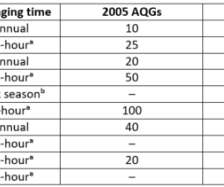California introduces first-in-nation rules to reduce climate “super pollutants” from commercial refrigeration, air conditioning equipment
Green Car Congress
DECEMBER 14, 2020
HFCs are synthetic gases that are used in a variety of applications, but mainly to replace ozone-depleting substances in aerosols, foams, refrigeration and air-conditioning. California is required to reduce HFC emissions 40% below 2013 levels by 2030 under Senate Bill 1383.






















Let's personalize your content